Abstract
Pigeons' responses in the presence of two concurrently available (initial-link) stimuli produced one of two different (terminal-link) stimuli according to identical but independent variable-interval schedules. Responses in the presence of each terminal-link stimulus produced equal frequencies of food reinforcement, but in the presence of one of the stimuli, food depended upon the emission of a response rate either higher or lower than a specified value (differential reinforcement of rates). The measure of preference, the dependent variable, was the distribution of responses in the presence of the concurrently available stimuli of the initial links. Each pigeon, the responding of which was appropriately controlled by the response-rate requirements in the two terminal-link stimuli, consistently preferred the stimulus not associated with a response-rate requirement.
Full text
PDF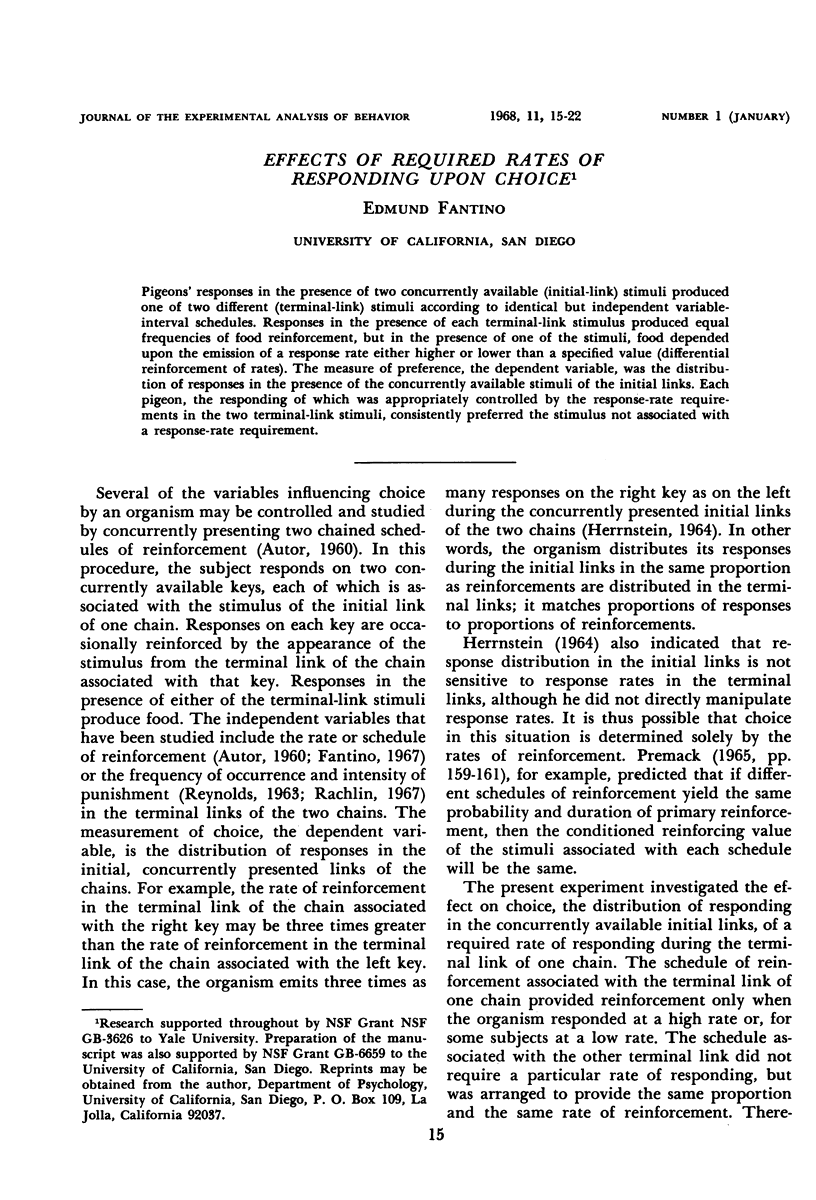
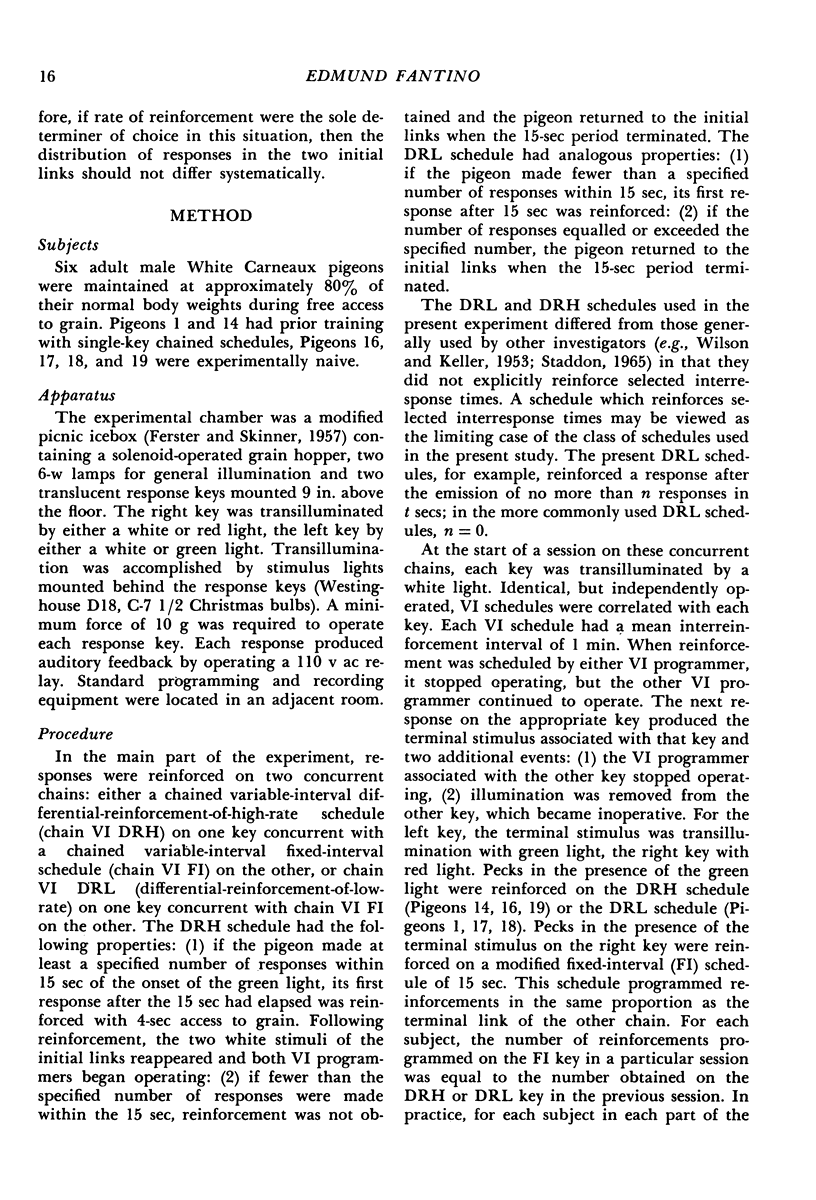
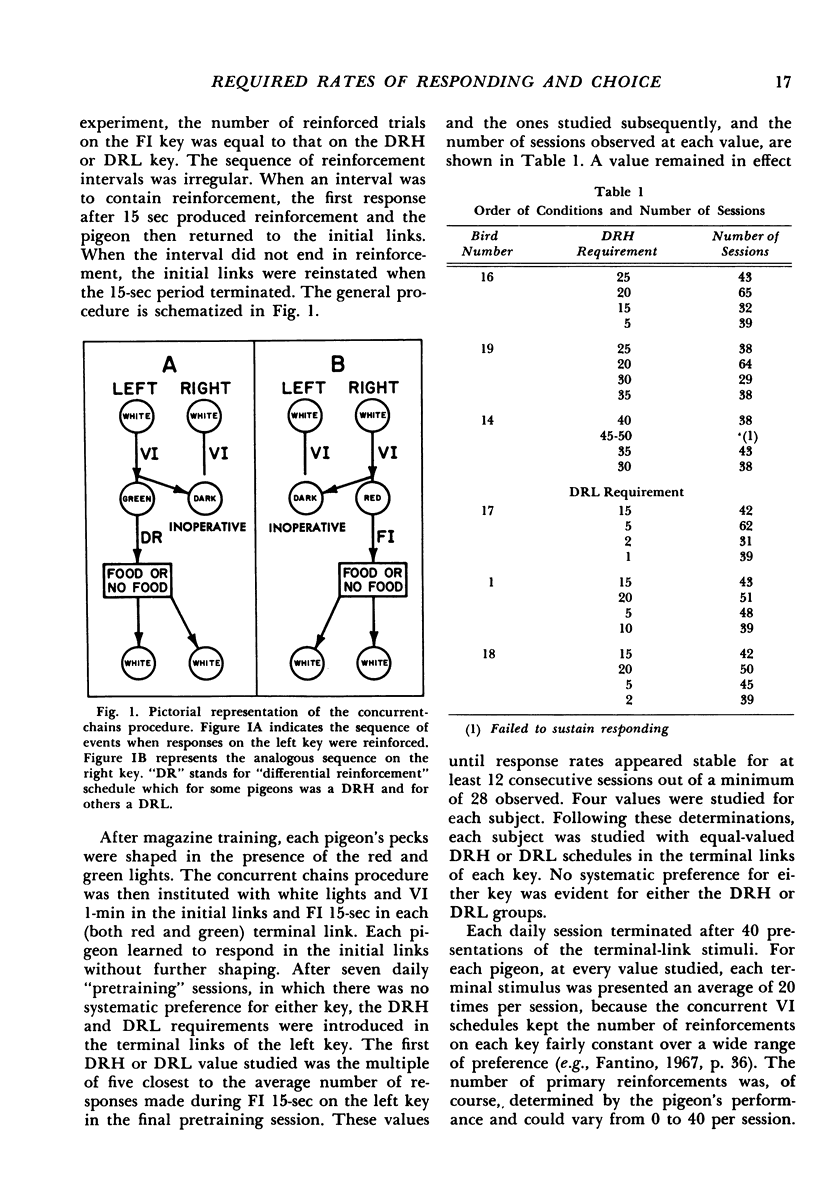
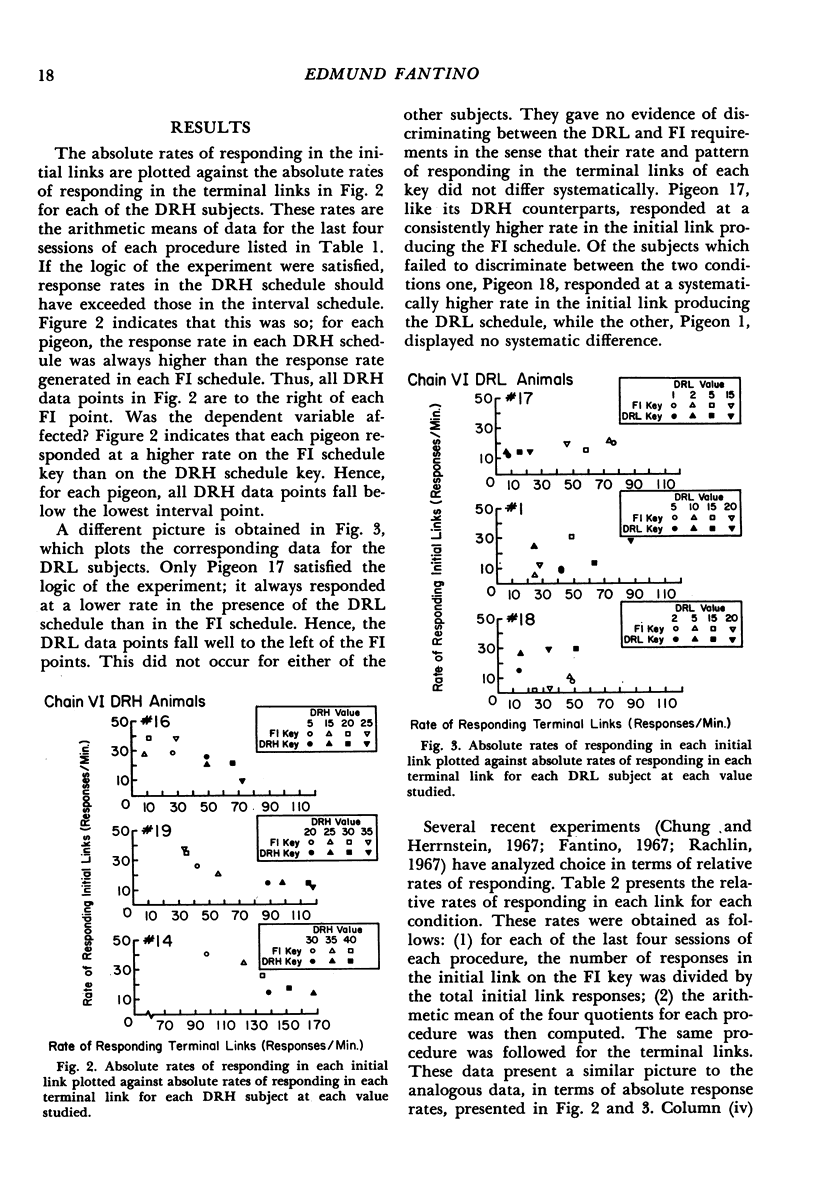
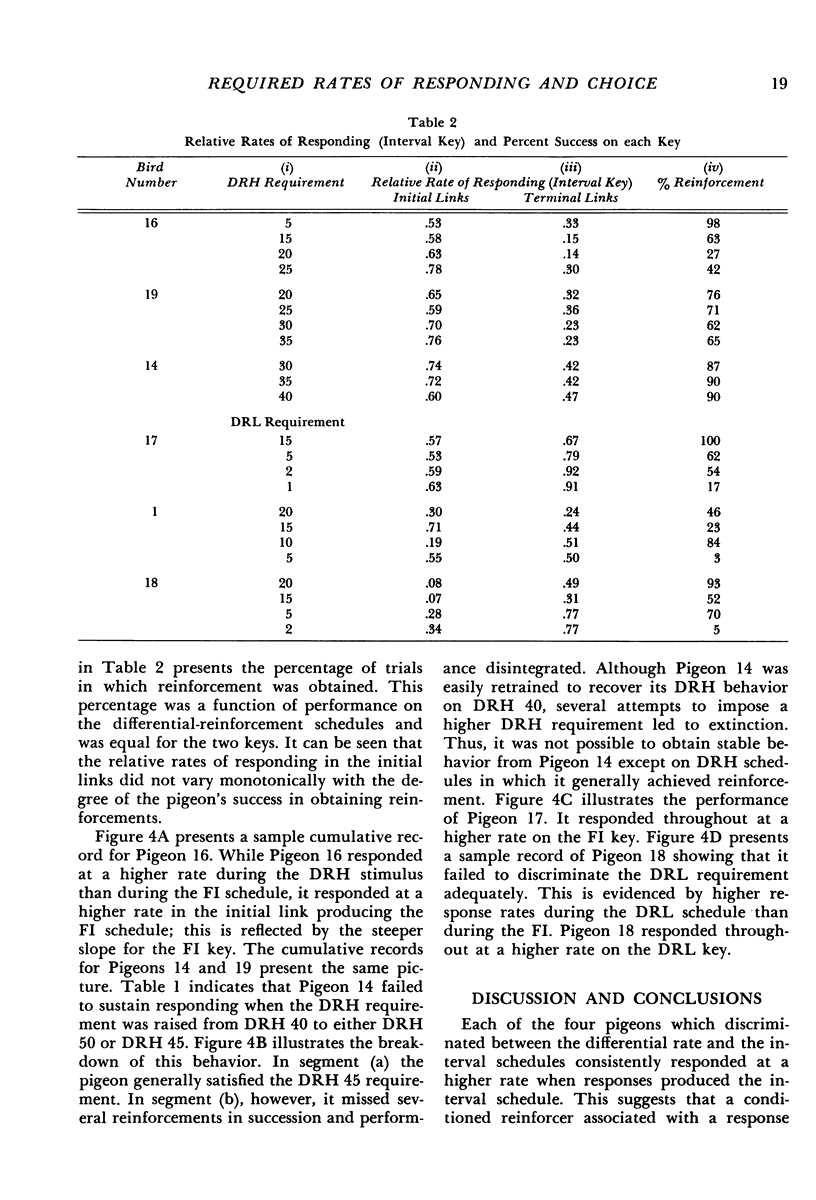
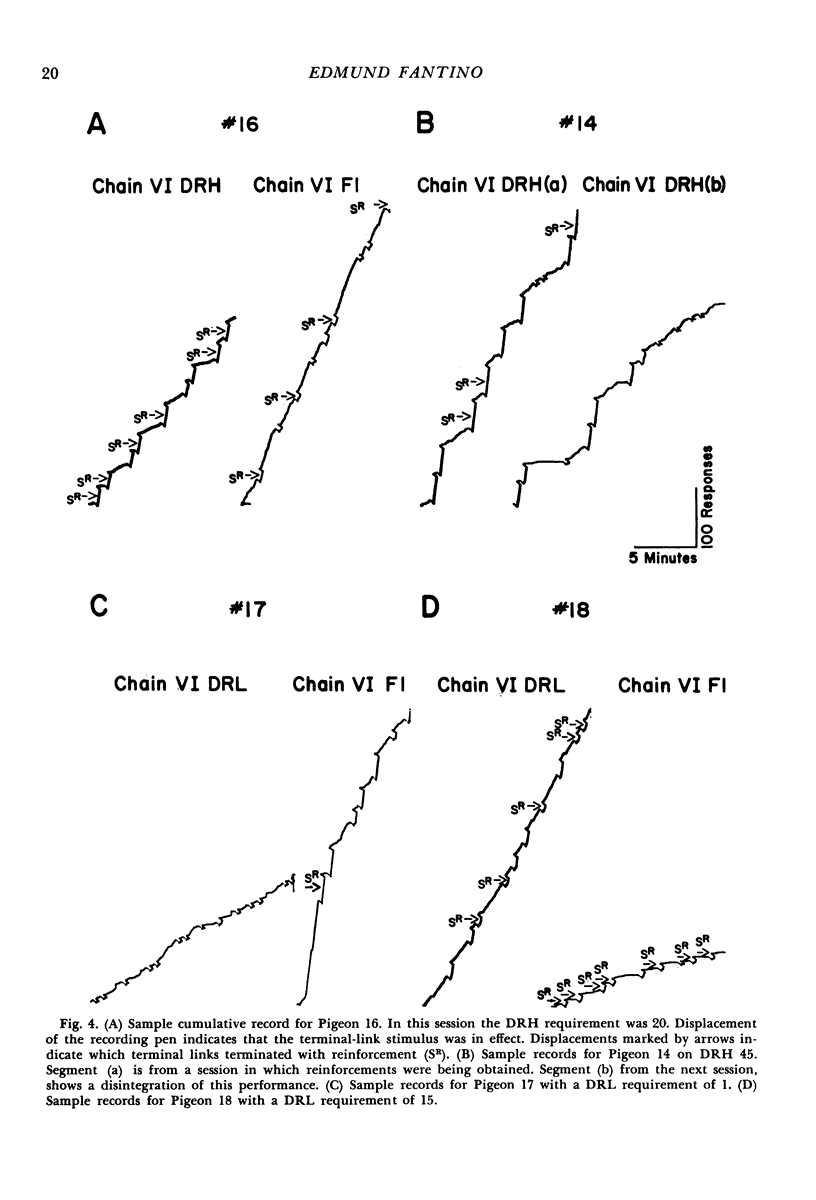
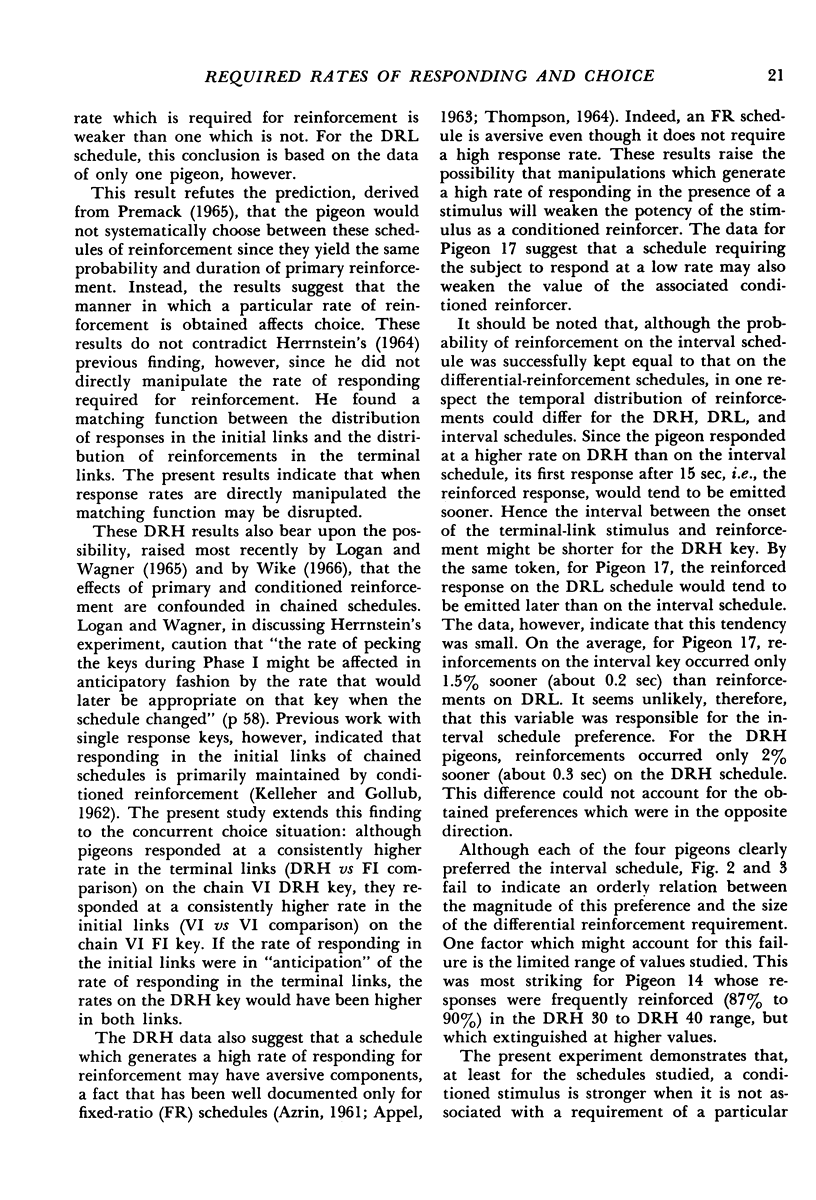

Selected References
These references are in PubMed. This may not be the complete list of references from this article.
- APPEL J. B. Aversive aspects of a schedule of positive reinforcement. J Exp Anal Behav. 1963 Jul;6:423–428. doi: 10.1901/jeab.1963.6-423. [DOI] [PMC free article] [PubMed] [Google Scholar]
- AZRIN N. H. Time-out from positive reinforcement. Science. 1961 Feb 10;133(3450):382–383. doi: 10.1126/science.133.3450.382. [DOI] [PubMed] [Google Scholar]
- Chung S. H., Herrnstein R. J. Choice and delay of reinforcement. J Exp Anal Behav. 1967 Jan;10(1):67–74. doi: 10.1901/jeab.1967.10-67. [DOI] [PMC free article] [PubMed] [Google Scholar]
- Fantino E. Preference for mixed- versus fixed-ratio schedules. J Exp Anal Behav. 1967 Jan;10(1):35–43. doi: 10.1901/jeab.1967.10-35. [DOI] [PMC free article] [PubMed] [Google Scholar]
- HERRNSTEIN R. J. SECONDARY REINFORCEMENT AND RATE OF PRIMARY REINFORCEMENT. J Exp Anal Behav. 1964 Jan;7:27–36. doi: 10.1901/jeab.1964.7-27. [DOI] [PMC free article] [PubMed] [Google Scholar]
- KELLEHER R. T., GOLLUB L. R. A review of positive conditioned reinforcement. J Exp Anal Behav. 1962 Oct;5:543–597. doi: 10.1901/jeab.1962.5-s543. [DOI] [PMC free article] [PubMed] [Google Scholar]
- Rachlin H. The effect of shock intensity on concurrent and single-key responding in concurrent-chain schedules. J Exp Anal Behav. 1967 Jan;10(1):87–93. doi: 10.1901/jeab.1967.10-87. [DOI] [PMC free article] [PubMed] [Google Scholar]
- Reynolds G. S. Potency of Conditioned Reinforcers Based on Food and on Food and Punishment. Science. 1963 Mar 1;139(3557):838–839. doi: 10.1126/science.139.3557.838. [DOI] [PubMed] [Google Scholar]
- STADDON J. E. SOME PROPERTIES OF SPACED RESPONDING IN PIGEONS. J Exp Anal Behav. 1965 Jan;8:19–27. doi: 10.1901/jeab.1965.8-19. [DOI] [PMC free article] [PubMed] [Google Scholar]
- THOMPSON D. M. ESCAPE FROM SD ASSOCIATED WITH FIXED-RATIO REINFORCEMENT. J Exp Anal Behav. 1964 Jan;7:1–8. doi: 10.1901/jeab.1964.7-1. [DOI] [PMC free article] [PubMed] [Google Scholar]
- WILSON M. P., KELLER F. S. On the selective reinforcement of spaced responses. J Comp Physiol Psychol. 1953 Jun;46(3):190–193. doi: 10.1037/h0057705. [DOI] [PubMed] [Google Scholar]


